No products in the cart.
NEWS
Growing Popular Citrus and Segmented Fruit Trees
From the tangy burst of a fresh orange to the rich, unique flavor of durian, citrus and other segmented fruits offer incredible diversity and appeal. These trees are not just sources of delicious produce; they also add beauty and fragrance to any garden. While often associated with tropical climates, many varieties can be cultivated successfully in various regions, making them increasingly popular among home gardeners and commercial growers alike. At Biogarden.asia, we understand the joy of nurturing these rewarding trees. Let’s explore some of the most sought-after citrus and segmented fruit varieties and learn how to cultivate them to their full potential.
Understanding Citrus and Segmented Fruit Trees
Citrus fruits like lemons, oranges, mandarins, grapefruits, and pomelos are perhaps the most well-known members of this group, botanically belonging to the Citrus genus within the Rutaceae family. The term “segmented fruit trees” in the context of this guide also encompasses other tropical fruits that naturally separate into segments, such as jackfruit, mangosteen, soursop, langsat, and durian, although they belong to different plant families.
These trees typically share several common characteristics beneficial for cultivation. They generally feature a branched structure, and their flowers are often notably fragrant, adding sensory appeal to the garden. Most develop a significant taproot system for stability and nutrient absorption, and some may also have surface roots.
While adaptable to many conditions, these trees thrive best within a relatively warm temperature range, ideally between 23°C and 29°C (73°F and 84°F). Appropriate humidity levels, around 70% to 80%, are also crucial for optimal growth and fruit development, particularly for many tropical varieties. They perform best when planted in fertile, loose, well-drained soil, such as alluvial soil, which prevents waterlogging and allows roots to breathe.
10 Popular Citrus and Segmented Fruit Varieties to Grow
Home gardeners and commercial growers alike are increasingly interested in cultivating segmented fruit trees due to their relative ease of growing and consistent yield. This list introduces 10 varieties, offering ideas to enhance your garden with both beauty and bountiful harvests.
Lemon Tree
One of the easiest and most popular citrus trees to grow is the lemon. Highly versatile with numerous culinary and household uses, lemons are a staple in many gardens. Lemon trees are relatively compact and can even be grown successfully in containers on balconies or in small yards, making them accessible regardless of space constraints. Their evergreen foliage and fragrant blossoms provide year-round appeal.
 Lemon tree in a pot laden with ripe yellow lemons
Lemon tree in a pot laden with ripe yellow lemons
Variegated Lemon Tree
For a more visually striking option, consider the variegated lemon. This variety is prized for its ornamental value, featuring beautiful green and white striped leaves and young fruits that mirror this pattern before ripening to a traditional yellow. It can serve as an attractive landscape plant, perfect for decorative displays or container gardening. The fruit itself is quite tart, ideal for refreshing drinks and adding zest to dishes.
 Close-up of a variegated lemon fruit showing green and white striped rind
Close-up of a variegated lemon fruit showing green and white striped rind
Kumquat Tree
Kumquats are a beloved segmented fruit, particularly popular for ornamental use, especially during festive seasons like Lunar New Year (Tet). Kumquat trees are available in various sizes, from small bonsai suitable for tabletops to larger specimens reaching 1-2 meters tall for display. Beyond their decorative appeal, kumquats produce small, flavorful fruits packed with vitamins like A, B2, and C, offering numerous health benefits. Kumquat fruit can aid digestion, support eye health, and is a traditional remedy for coughs and colds.
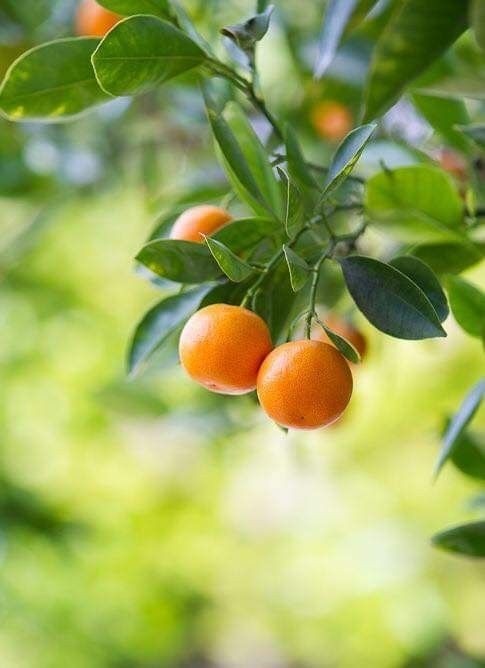 A small kumquat tree in a pot with many ripe orange fruits, commonly used for Lunar New Year decoration
A small kumquat tree in a pot with many ripe orange fruits, commonly used for Lunar New Year decoration
Pomelo Tree
The pomelo is a highly valued large citrus fruit tree. Thanks to advancements in agricultural techniques, growing pomelos has become more accessible for many growers. Pomelos are known for their refreshing, slightly sweet flesh and are excellent for fresh consumption. The tree is multipurpose; beyond the fruit, various parts can be used for essential oils, food processing, medicinal purposes, and making beverages.
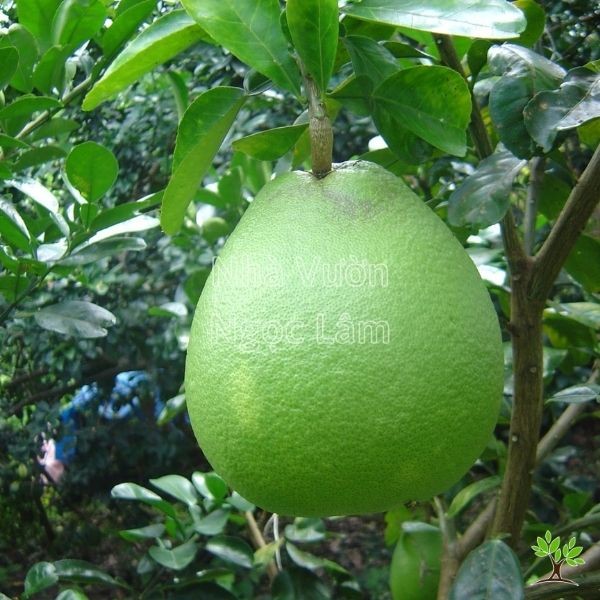 Large green pomelo fruit hanging from a branch
Large green pomelo fruit hanging from a branch
Tangerine Tree
Tangerine trees are relatively easy to cultivate and offer good economic returns. Many gardeners also grow them in pots as attractive additions to patios or garden spaces. Tangerines are typically enjoyed fresh due to their sweet and juicy segments. They are also used in preserves, juices, and traditional medicine for ailments like coughs, stomach issues, improving circulation, and aiding digestion.
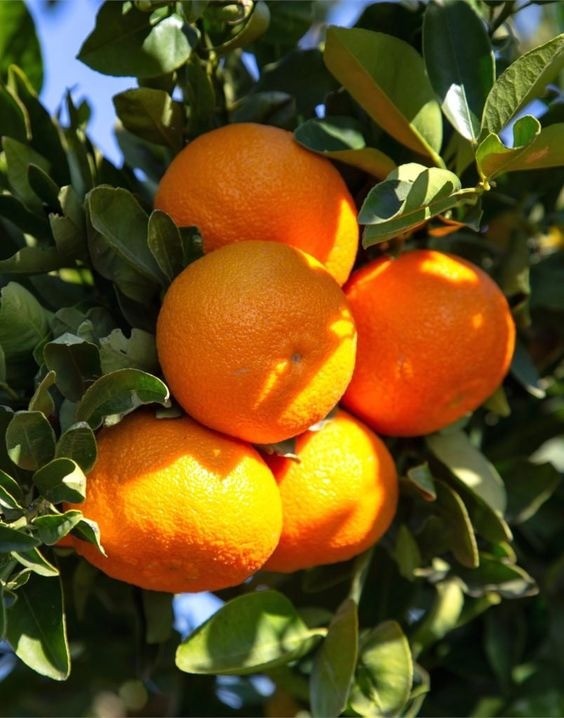 Tangerine fruits ripening on a tree branch
Tangerine fruits ripening on a tree branch
Jackfruit Tree
Moving beyond the citrus family to other segmented tropical fruits, the jackfruit is a prominent example. Numerous jackfruit varieties exist today, including popular types like the Durian jackfruit, Malaysian, Thai Super Early, and Red Flesh varieties. Jackfruit trees are known for their high yield, ease of care, and relatively low investment compared to some other fruit trees, making them a favored choice for orchards. Modern varieties are bred for abundant, fleshy segments with minimal fiber, offering a deliciously crispy and sweet texture. Tropical climates are particularly well-suited for their vigorous growth and fruit production.
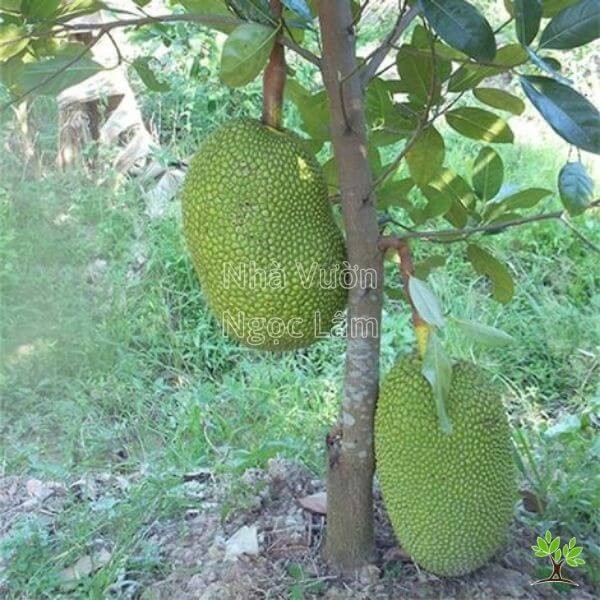 A young Thai Super Early Jackfruit tree
A young Thai Super Early Jackfruit tree
Langsat (Bon Bon) Tree
Langsat, known in some regions as Bon Bon, is another segmented tropical fruit valued for its unique sweet-sour yet refreshing taste. Langsat is not only delicious but also offers health benefits and holds significant economic value, making it a desirable tree for home gardens and commercial farms alike. While several types exist, Thai Langsat and Red Langsat are particularly popular for their superior sweetness and impressive yield.
 Clusters of ripe langsat fruits growing on a branch
Clusters of ripe langsat fruits growing on a branch
Mangosteen Tree
Often dubbed the “Queen of Tropical Fruits” for its elegant appearance and exquisite sweet-sour flavor, mangosteen is widely cultivated in tropical regions. This segmented fruit tree boasts a high yield and is cherished by consumers for its refreshing and nutrient-rich flesh. Its delightful taste and health benefits have contributed to its global popularity.
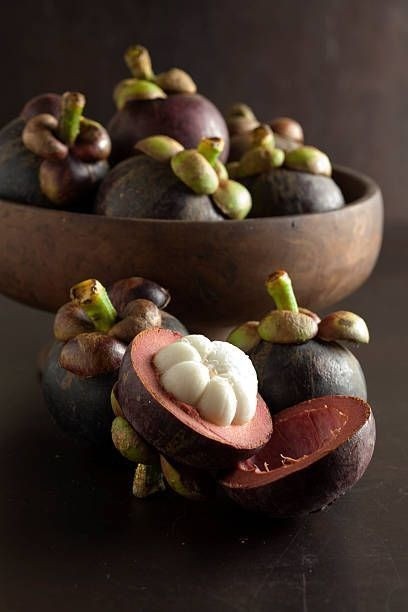 Several dark purple mangosteen fruits with green calyxes
Several dark purple mangosteen fruits with green calyxes
Annona Fruits (Custard Apple / Soursop)
Annona species, such as Custard Apple (Na) and Soursop (Mãng cầu xiêm), are segmented tropical fruits widely grown globally. They are characterized by their soft, aromatic flesh with a unique sweet taste. Annona fruits are an excellent source of Vitamin C and other essential nutrients, making them beneficial for overall health and the digestive system. Their wonderful flavor and nutritional profile have made them popular and sought-after fruits. The image shown here is typical of a Custard Apple or Sugar Apple.
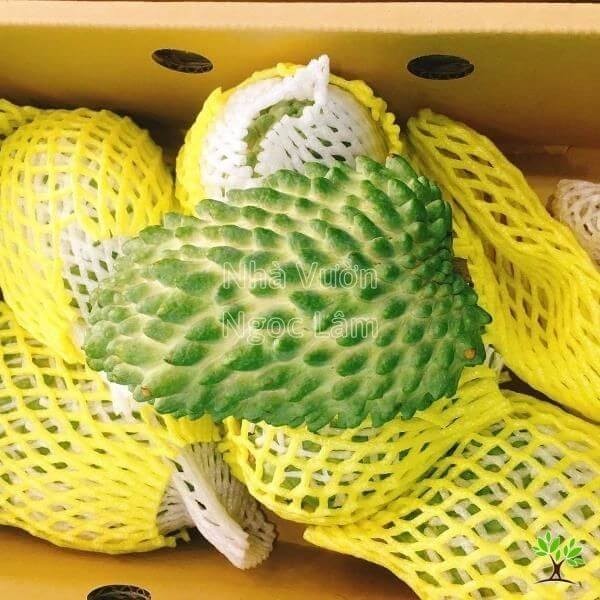 A ripe Sugar Apple fruit with segmented skin
A ripe Sugar Apple fruit with segmented skin
Durian Tree
Perhaps one of the most famous – or infamous – segmented tropical fruits, the durian, is a highly prominent and economically valuable crop today. Known for its strong aroma and rich, creamy flesh, durian is gaining increasing attention from growers investing in intensive cultivation methods to maximize economic returns. The market offers many durian varieties, each with distinct flesh quality, such as Ri6, Thai, Chuong Bo, Hap Lep (seedless), Long Khanh, and Cai Mon. Beyond its unique taste, durian is notably nutritious, containing high levels of sugar, protein, fat, and minerals compared to many other fruits, making it a very nourishing option.
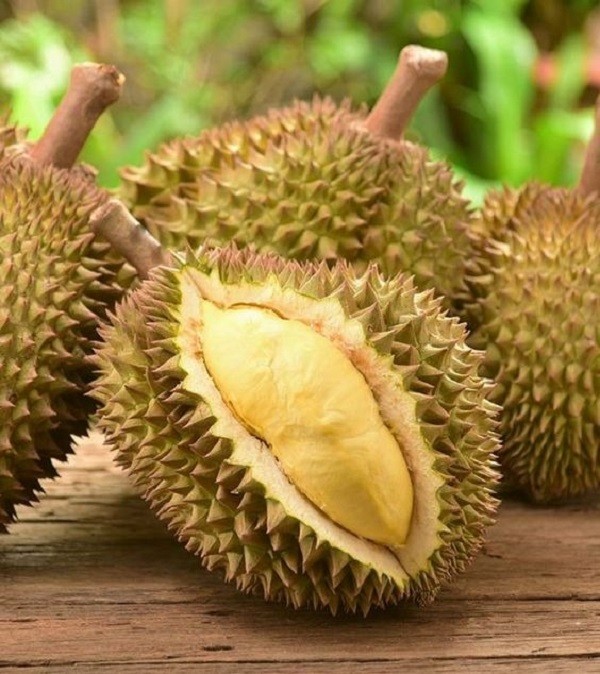 A large durian fruit with thorny rind hanging from a tree branch
A large durian fruit with thorny rind hanging from a tree branch
Planting Your Segmented Fruit Trees
As highlighted, the specific needs of citrus and other segmented fruit trees can vary by species and variety. Therefore, it’s important to consider the specific requirements of the tree you choose when planning your planting layout and spacing.
First, prepare the planting site. Select a location with adequate sunlight and good drainage. If planting in a field, preparing soil mounds can improve drainage, especially in areas prone to waterlogging. Dig planting holes on these mounds. A common size for a seedling hole is about 30-40 cm wide and 40 cm deep. Adjust the size based on the root ball of your specific seedling.
Before planting, enrich the hole with base fertilizer. A recommended mix is a 2:1:1 ratio of well-rotted manure, husk ash (or other organic matter), and soil from the hole. This provides nutrients and improves soil structure. Allow this mix to settle for 1-2 weeks before planting. Carefully place the seedling in the hole, ensuring the graft union (if any) is above soil level, backfill with the prepared soil mix, and gently firm the soil around the base to ensure stability. Planting a stake alongside the young tree can provide essential support against wind until the root system is established.
Essential Care for Healthy Fruit Production
Proper care is paramount to ensuring your citrus and segmented fruit trees are healthy and productive, leading to high yields of quality fruit. Here are some key aspects of care to focus on:
Fertilization
Regular and appropriate fertilization is crucial for the growth and fruiting of these trees. It’s best to use fertilizers specifically formulated for fruit trees or balanced NPK fertilizers adapted to different growth stages.
- First Application: Apply a nitrogen and phosphorus rich fertilizer after harvest. This helps the tree recover, encourages new leaf and branch growth, and supports root development.
- Second Application: Fertilize before flowering, focusing on phosphorus and potassium. This promotes flower bud differentiation and supports the pollination process, leading to better fruit set.
- Third Application: This application is made when the tree has set fruit and the fruits are developing. A balanced NPK fertilizer is usually appropriate to fuel fruit growth.
- Fourth Application: About two months before the anticipated harvest, apply a fertilizer, often higher in potassium, to support fruit sizing, ripening, and overall quality (color, flavor, sweetness).
Adjust fertilizer types and amounts based on soil test results, tree age, and specific variety needs.
Pruning and Canopy Management
Strategic pruning is vital for shaping the tree, improving airflow, and maximizing fruit production.
- Initial Shaping: When young trees reach about 0.5m in height, you can begin forming the scaffold branches. Cutting the tip (heading back) encourages side shoots to develop, creating a strong framework.
- Annual Pruning: After harvest each year, prune to remove old, unproductive branches, dead or diseased wood, and any branches that are crossing or rubbing. Thinning the canopy allows better light penetration and air circulation, which reduces pest and disease pressure and promotes even ripening.
- Weeding: Regularly remove weeds around the base of the tree. Weeds compete for water and nutrients, hindering tree growth. Keeping the area clear also helps create a healthier environment less conducive to pests and diseases. Adding mulch can help suppress weeds and retain soil moisture.
Consistent watering is also essential, especially during dry periods and fruit development. Aim for consistent soil moisture but avoid waterlogging, which can lead to root rot.
Cultivating Your Own Segmented Fruit Paradise
Exploring the world of citrus and segmented fruit trees opens up a universe of flavors and gardening rewards. From zesty lemons to exotic durians, these trees offer not just delicious harvests but also enhance the beauty and biodiversity of your space. By understanding their basic needs – from optimal climate and soil to proper planting and ongoing care – you can cultivate thriving trees that will bless you with abundant fruit for years to come.
At Biogarden.asia, we are passionate about helping you succeed in your gardening endeavors. We offer robust, healthy seedlings of many popular fruit varieties, including those discussed here, and the knowledge to guide you through the planting and care process. Embark on your journey to growing these remarkable fruits and enjoy the bountiful results!



